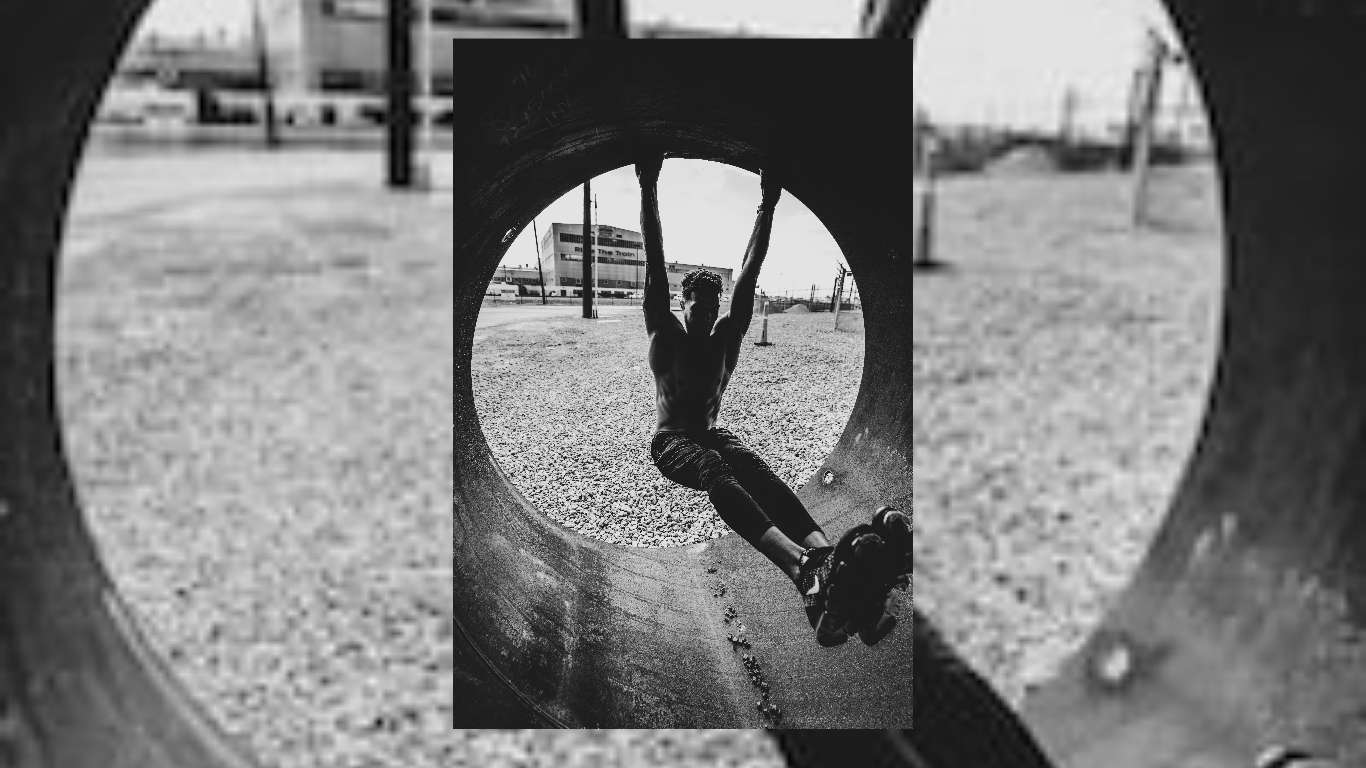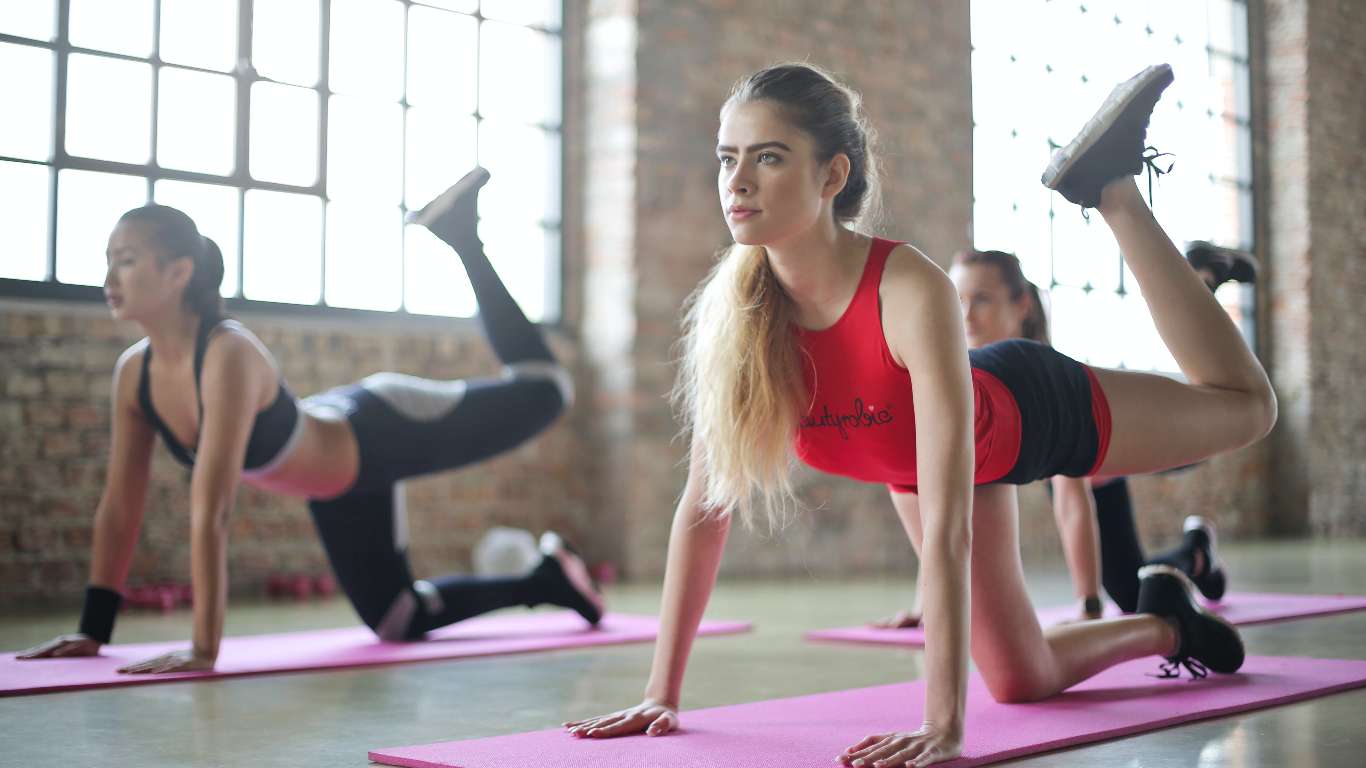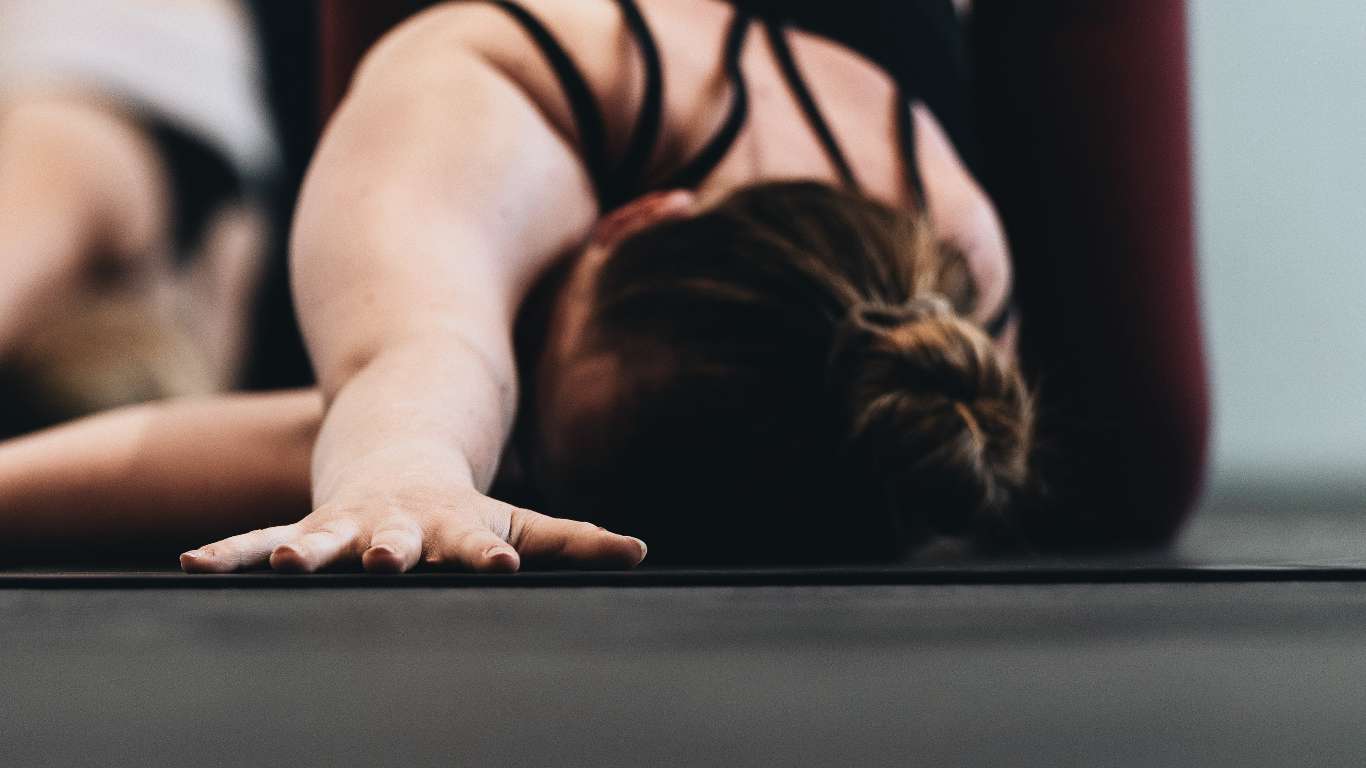| The spine is the backbone of our physical bodies, literally and symbolically. It provides us with structure, support, and movement; it’s no wonder that caring for our back is essential to maintaining overall health and well-being.
But what does this mean in terms of bodyweight exercises? How often should we be performing them to see results? This article will explore the importance of proper back care and how to best achieve it through bodyweight exercises. We all have different needs when it comes to physical activity, but one thing remains the same – your back needs attention. Whether you’re seeking relief from chronic pain or want to build strength and flexibility, incorporating bodyweight exercises into your routine can make a huge difference in your overall health. Regular bodyweight workouts help reduce stress on the spine and improve your posture, balance, and coordination – all of which are essential for healthy living. So how often should you perform bodyweight exercises for your back to see results? The answer isn’t as simple as it may seem at first glance. We’ll dive deeper into what kind of bodyweight exercises best suit your goals and how often you should perform them to maximize the benefits. Read on to learn more about taking care of your back with effective bodyweight workouts!
Table of Contents
show
Bodyweight Exercises For The BackRegarding getting healthy and toned, bodyweight exercises for the back are practical. They require minimal equipment and can be done in the comfort of your home. It’s also great to have a variety of different workouts that you can do when time allows. But before you dive into any bodyweight exercises for the back and biceps, it’s essential to understand what muscles are in your back and how they work. Different bodyweight exercises will target other muscles, so understanding these muscles is vital to maximizing your results. So, it’s time to take a closer look at the muscles in your back and how they factor into your workout routine. Understanding The Muscles In Your BackUnderstanding your back muscles is critical to performing the proper bodyweight exercises for the best results. The theory of exercising the back with bodyweight exercises can be traced back centuries and is still used today. But why? To understand this, it is essential to look at what makes up the back muscles and how they are affected by bodyweight exercises. The back comprises four main muscles: the trapezius, latissimus dorsi, rhomboids, and erector spinae – all of which contribute to different movements. Trapezius: This muscle is responsible for shoulder elevation, neck extension, and upper arm movement. Latissimus dorsi: This muscle helps extend the shoulder joint and rotate it inwards. Rhomboids: These muscles connect the shoulder blades and pull them together during movement. Erector spinae: This group of muscles runs along the spine and helps support your posture and hold your torso upright during movements such as lifting weights or running. Bodyweight exercises targeting these muscles can be beneficial in strengthening them as well as increasing flexibility. To get started on a bodyweight routine for your back, consider these exercises:
These bodyweight exercises target all of the major muscles in your back while providing a great workout that can help you build strength without putting strain on your joints or spine. The most important thing when it comes to exercise is consistency – so make sure you’re doing these bodyweight exercises regularly to see results! With an understanding of how these exercises work with your back muscles, you’ll be ready to move on to learning about the benefits of bodyweight back exercises… Benefits Of Bodyweight Back ExercisesGetting into shape and keeping your back healthy can be a challenge. But with the proper bodyweight exercises for the back, you can easily reach your goals without ever having to leave home. No equipment or gym membership is required! Bodyweight exercises for the back are a great way to strengthen and tone your muscles without investing in expensive equipment or taking out a gym membership.
Plus, you can get creative by mixing up different bodyweight exercises such as back extensions, rear delts (deltoids), knee raises, squats, and planks – there’s something for everyone! Moreover, bodyweight exercises for the back don’t require special skills or advanced techniques. They are easy to perform and can be done from the comfort of your home – no matter how busy life gets! This makes them ideal for those new to exercise and experienced athletes who want to boost their performance. By incorporating bodyweight exercises for the back into your routine, you’ll enjoy various benefits, from improved posture to increased strength and endurance. It is an excellent way to stay fit while avoiding the strain of heavy weights on bad joints like knees or hips. So why not give it a try? You have nothing to lose but everything to gain! How Often To Perform Bodyweight Back ExercisesIronically, when it comes to bodyweight back exercises, most people think “the more, the better,” – but in reality, this couldn’t be further from the truth. Consistency is critical in getting the best results from your bodyweight routine. Not only should you be performing your chosen set of bodyweight exercises regularly (at least three times per week), but you should also be making sure you are giving your muscles adequate rest days between sessions. This will ensure that your muscles have enough time to recover and grow stronger. Additionally, if you’re feeling sore or tired after a session, then take a break – overtraining can lead to injury and fatigue, which can hinder progress in the long run. With all of this in mind, it’s important to remember that there is no one-size-fits-all answer regarding how often you should perform bodyweight exercises for your back. Everyone’s needs differ depending on their fitness level and goals, so it’s essential to find an effective balance that works specifically for you. Considering factors such as age, diet, and current fitness levels will help you find the perfect frequency of your routine to get the most out of every session. Factors That Affect The Frequency Of Bodyweight Back ExercisesRegarding bodyweight exercises for your back, some key factors affect how often you should perform them. Everyone is different, and what works for one person may not work for another. That’s why it’s essential to understand the basics and tailor your routine to fit your needs.
For example, doing bodyweight exercises too often could cause strain and discomfort if you have a history of lower back pain. On the other hand, if you’re relatively healthy, regular bodyweight exercises can help strengthen and tone your back muscles. Additionally, consider your lifestyle and schedule when deciding on a frequency for bodyweight exercises. Opting for shorter but more frequent workout sessions could be beneficial if you lead a busy life or work long hours during the week. This allows you to exercise while still having time to rest and recover between sessions. For those with more free time, longer workouts at a lower frequency could also be an option. No matter what approach, give yourself enough time between sessions so your muscles can rest properly without feeling tired or sore afterward. With this in mind, setting a realistic schedule that fits into your lifestyle is essential if you want results from bodyweight training, back pain relief, and strengthening exercises such as squats, upper back exercises, and arm strength drills. Setting A Schedule For Bodyweight Back ExercisesRegarding bodyweight back exercises, the key to seeing results is consistency. According to a recent study, performing bodyweight back exercises two or three times a week can help you achieve the desired results. Setting a schedule for bodyweight back exercises is essential if you want long-term improvements. Here are four tips that can help you get started:1) Start with basic bodyweight exercises such as push-ups, squats, and planks. These will strengthen your core and build muscle in your lower back and biceps. 2) Progress gradually by adding more challenging exercises like chin-ups, inverted rows, and pull-ups into your routine. This will help you increase muscle mass and strength in your upper back and triceps. 3) Focus on form rather than quantity when performing bodyweight exercises for fat loss or muscle gain. Ensure proper form throughout each exercise to ensure maximum efficiency and safety. 4) Mix up your routine regularly by adding new bodyweight exercises at home or the gym. This will keep things fresh while helping you stay motivated over time. Remember that strength isn’t built overnight – it takes hard work, dedication, and discipline to see results from your bodyweight back and biceps workout calisthenics routine. The best way to ensure progress is to challenge yourself by increasing the difficulty of the exercises over time. This is known as progressive overload, an important concept discussed in the following section. The Importance Of Progressive OverloadProgressive overload is a crucial concept for realizing results with bodyweight back exercises. It is the gradual increase of stress placed on the muscles over time to ensure that they continue to grow and adapt to the new stimulus.
It’s like when you tell someone “the sky’s the limit,”; you’re suggesting that there are no boundaries and anything is possible. With progressive overload, you essentially say, “the harder I push myself, the more I can accomplish.” When it comes to performing these exercises effectively and efficiently to achieve maximum benefit from them – always remember that it isn’t just about doing more reps or adding weight – it’s also about pushing yourself beyond what’s comfortable so that your muscles are forced to adapt to keep up with the demand being placed on them. That way, you can ensure that your hard work pays off in terms of actual results! Bodyweight Back Exercises To Incorporate Into Your RoutineBodyweight exercises are an excellent option for getting the most out of your workouts. They can be done at home and require no equipment, making them easy to incorporate into any routine. Whether you’re a beginner or an experienced lifter, there are many bodyweight back exercises that you can do to build strength and tone your muscles. The best lower back exercises in bodybuilding include superman holds and hip bridges. Planks are also great for strengthening your core and upper back. For larger muscle groups like shoulders and arms, push-ups, tricep dips, and burpees will help you get the best results. Chests and back weight exercises such as chest presses, rows, and pull-ups will also help target those areas. Whatever exercise you choose, you must ensure you have proper form and safety techniques to maximize your gains without risking injury. Techniques To Ensure Proper Form And SafetyRegarding bodyweight back exercises, proper form and safety are essential for achieving the desired results. From what exercises are suitable for back fat to weight exercises for lower back fat, there’s a range of movements that you can use to target your back muscles.
Picture yourself in front of a wall as if you’re about to do an inverted row. As you get ready to pull yourself up toward the wall, your spine must stay neutral, and your shoulders remain down. This is the same technique you should use when doing bodyweight back fat exercises, such as the best upper body bodyweight exercises with no equipment or even the best practice for back with no equipment. When engaging in any of these movements, focus on maintaining proper form by keeping your core engaged and squeezing your shoulder blades together throughout the exercise. To maximize muscle activation in each exercise, keep tension in your core from start to finish. Remember that cardio is not necessary for this routine, whether it’s during the best bodyweight back exercises with no equipment back exercise or during a simple bodyweight with no equipment back exercise. Adding some moderate-intensity aerobic activity, such as jogging or cycling, before or after your strength session can help increase calorie expenditure which may lead to more excellent results over time. With this advice in mind, let’s move on to how you can incorporate stretching into your routine… Incorporating Cardio And Stretching Into Your RoutineYou can choose from plenty of options for bodyweight back exercises that don’t require a bar or any other equipment. From the bodyweight bridge and best lower back bodyweight exercises to bodyweight exercises for bigger arms or chest and triceps, the possibilities are endless. Not only can you strengthen your core with these no-equipment bodyweight exercises, but adding in some cardio and stretching elements can help you get even better results in a shorter amount of time. The best way to ensure you’re getting all the benefits of your lower back workouts is to incorporate cardio and stretching into your routine. Regular breaks in between sets of exercises will reduce fatigue and help keep your movements more controlled. Stretching afterward will improve your flexibility while helping prevent muscle strain and spasms. Additionally, by adding some aerobic exercise into your workout routine—such as running, jumping jacks, or burpees—you’ll burn more calories while improving your overall fitness level. So when it comes time to work out with body weight back exercises, make sure you mix up the intensity levels with strength training and cardio-based moves. And remember: Don’t forget to stretch! Not only will this help improve your range of motion, but it’s also essential for keeping muscles healthy and intense over time. With this combination of techniques set in place, you’ll surely see results faster than ever! Conclusion:Bodyweight exercises can strengthen your back muscles and improve your overall health and well-being. When done correctly with proper form and intensity, they can help you achieve your desired results safely and efficiently. There is no one-size-fits-all answer when it comes to how often to perform bodyweight back exercises. It depends on several factors, such as the intensity of the exercise, how much rest you take between sets, and your fitness level and goals. To ensure optimal results and safety, it’s vital to incorporate progressive overload into your routine and focus on proper form for all exercises. Finally, don’t forget to add cardio workouts like walking or jogging into your routine, along with stretching exercises after each workout session. This will help you reduce the risk of injury while maximizing the benefits of bodyweight exercises for your back. With consistency and hard work, you can see great results from incorporating bodyweight back exercises into your fitness routine in no time. |

 Not only do they provide an effective workout for your core and back, but they also help improve posture, flexibility, balance, and overall strength.
Not only do they provide an effective workout for your core and back, but they also help improve posture, flexibility, balance, and overall strength.  For starters, consider any underlying medical conditions or injuries you may have that could affect the frequency of your workouts.
For starters, consider any underlying medical conditions or injuries you may have that could affect the frequency of your workouts.  Without this progressive overload, your body cannot make the necessary changes to improve its strength, endurance, and size. In other words, without progressive overload, you won’t see any results.
Without this progressive overload, your body cannot make the necessary changes to improve its strength, endurance, and size. In other words, without progressive overload, you won’t see any results. To help make sure you’re engaging these muscles correctly, I’d like to share a few techniques that will ensure you maintain proper form and safety while doing bodyweight back exercises.
To help make sure you’re engaging these muscles correctly, I’d like to share a few techniques that will ensure you maintain proper form and safety while doing bodyweight back exercises.